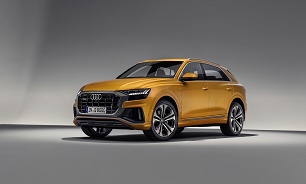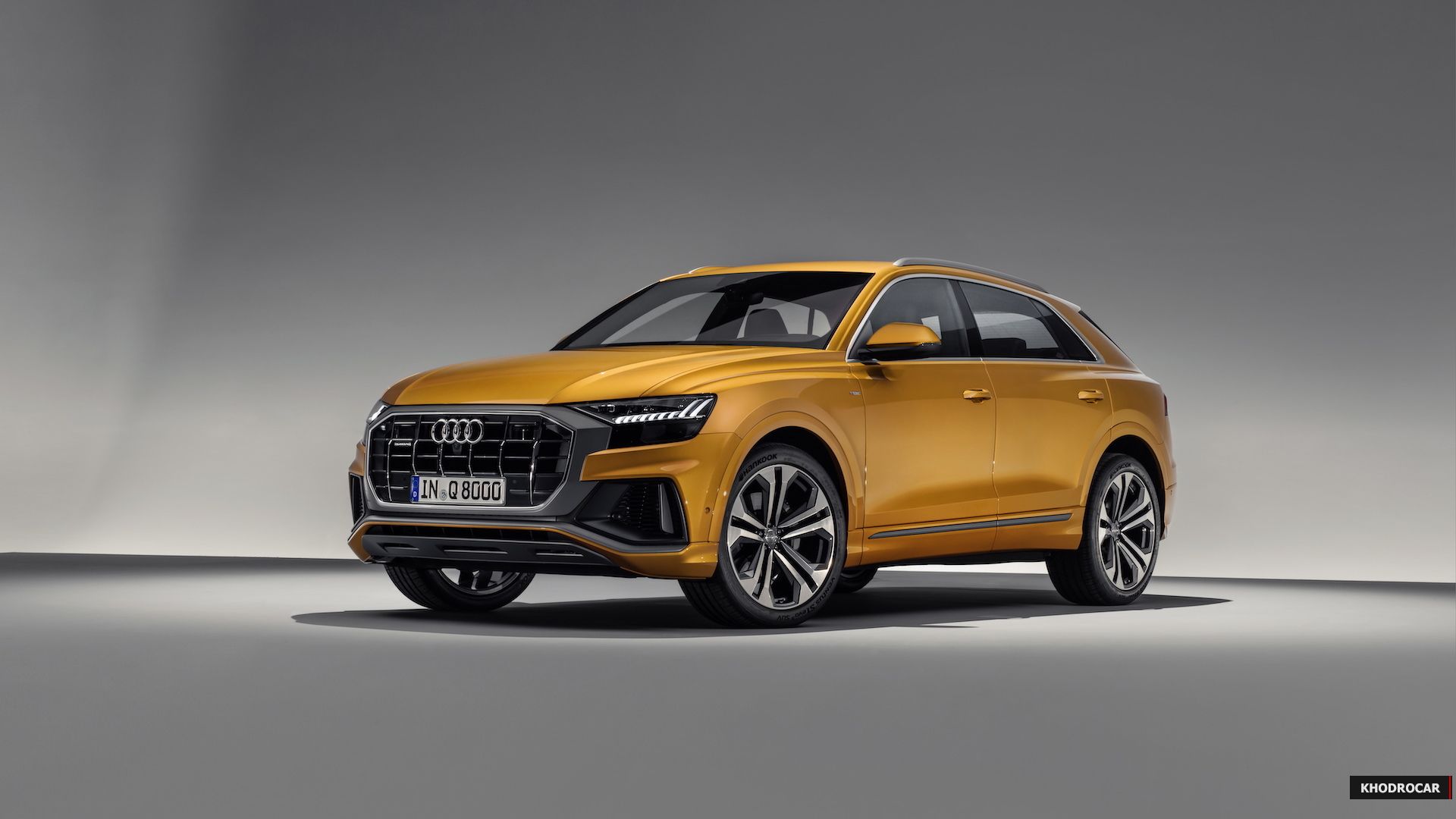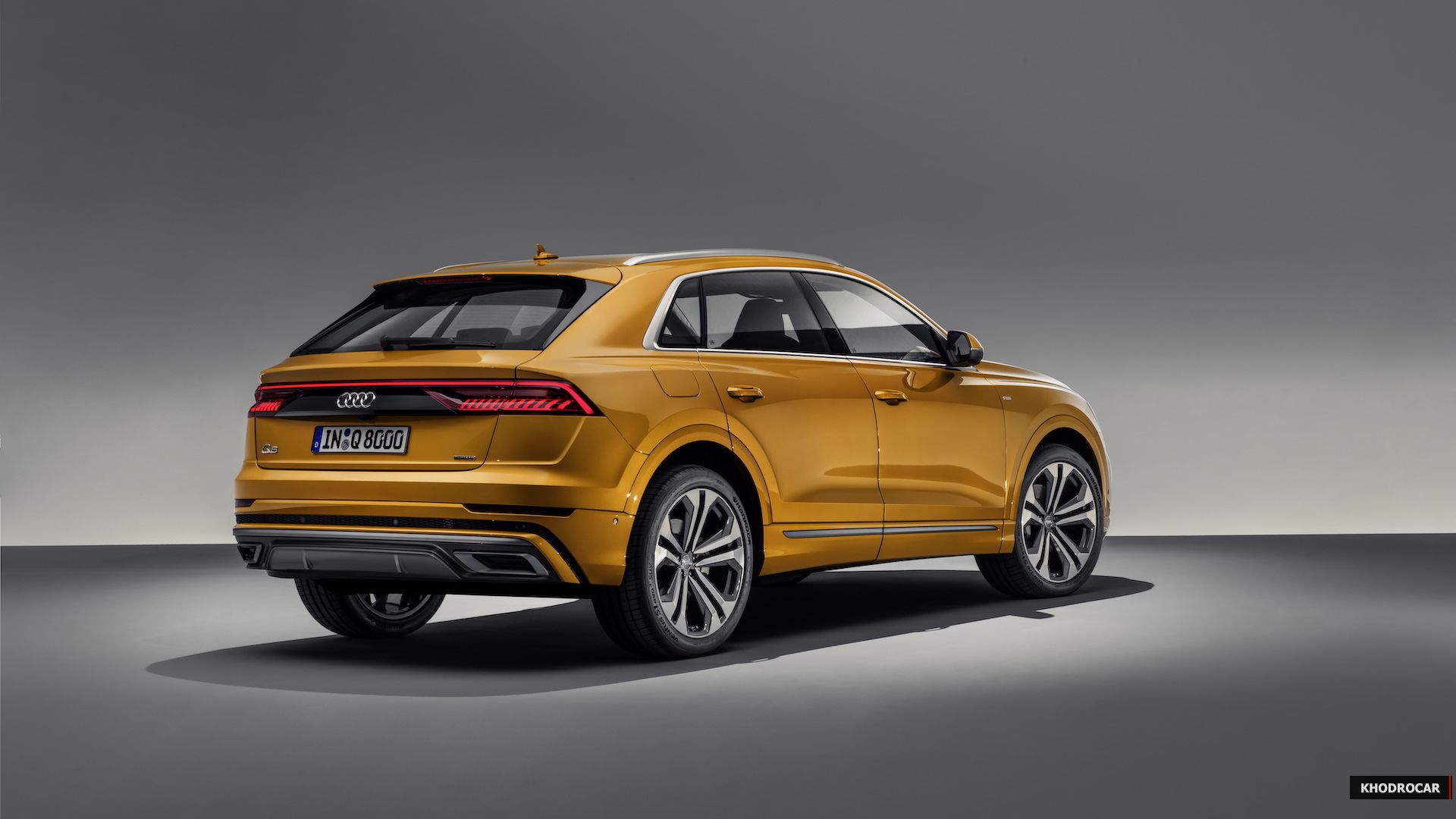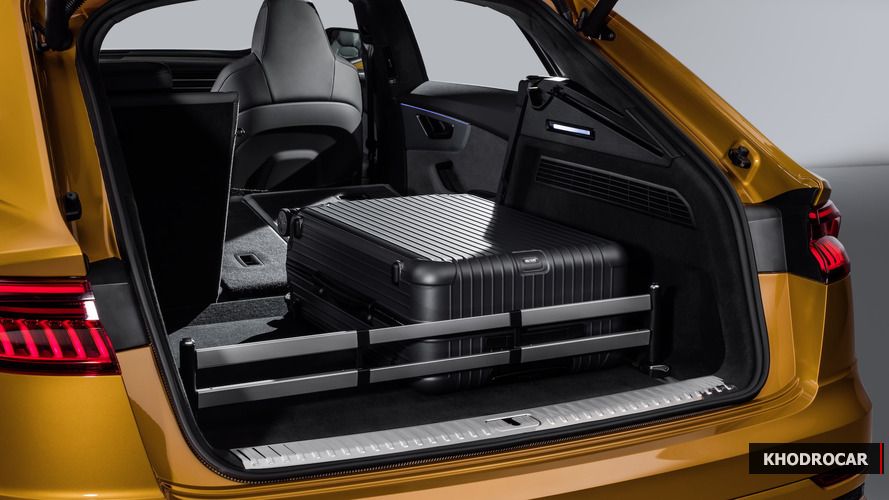Audi Is Finally Entering The Coupe-SUV Segment With All-New Q8

The Q8 also offers a large boot, which can hold up to 605 liters (21.3 cubic feet) of luggage with the rear seats on place, and up to 1,755 liters (61.9 cubic feet) if you fold them. To put these numbers into perspective, the automaker says two golf bags arranged in a transverse direction can be comfortably accommodated in the trunk. As standard, the tailgate is electrically operated and optionally available will be an electric parcel shelf.
Visually, the Q8 will be easily distinguishable from all other member of the Q family, as it incorporates Audi’s new styling language, pioneered by the new A8. It is highlighted by a prominent singleframe grille with six vertical chrome strips, which is flanked by a set of sleek matrix LED headlights. A massive C-pillar and a gently sloping roofline characterize the side profile, while at the back there’s a pair of LED taillights connected with a tin LED bar, and a stylish integrated spoiler.
If you’ve ever been inside the new A8 limousine, the Q8's interior won’t be a big surprise for you. The vehicle features a similar layout with two touchscreens on the center console, and another display in front of the driver’s eyes. This is where most of the information about the vehicle and its movement is displayed, while the two screens at the right are used for controlling the infotainment and climate functions.
Audi promises the Q8 will deliver an "extraordinarily precise running behavior,” thanks to its aluminum rich platform. The so-called Audi Space Frame uses about 15 percent of die-cast aluminum and 14.4 percent hot-worked high-strength steel. The architecture ensures the Q8 weighs only 4,728 pounds (2,145 kilograms) when equipped with the 3.0-liter TDI engine and features an aerodynamic drag coefficient of 0.34.



Speaking of the V6 diesel motor, it uses a mild-hybrid technology, which incorporates a 40-volt electric network, a lithium-ion battery, and a belt-driven alternator-starter. This system allows the SUV to run with the engine entirely off at speeds of up to 100 miles per hour (160 kilometers per hour) and to recover up to 12 kilowatts during deceleration. The real-life benefits of the system translate into an improved fuel consumption by about 0.7 liters per 100 kilometers.
The 3.0-liter V6 TDI in the Q8 50 TDI variant delivers 286 horsepower (213 kilowatts) and 442 pound-feet (600 Newton-meters) of torque, which are channeled to all four wheels through and eight-speed tiptronic automatic transmission and Audi’s Quattro AWD system. The sprint from 0 to 62 mph (0-100 kph) takes just 6.3 seconds. In the first months of 2019, the engine range will be joined by a slightly weaker version of the 3.0 TDI and a 3.0 TFSI gasoline variant with 340 hp (253 kW).
Built in Bratislava, Slovakia, the new Q8 will make its market debut in Germany and other European countries in the third quarter of the year. U.S. sales are slated to begin in 2019.
Source: motor1


